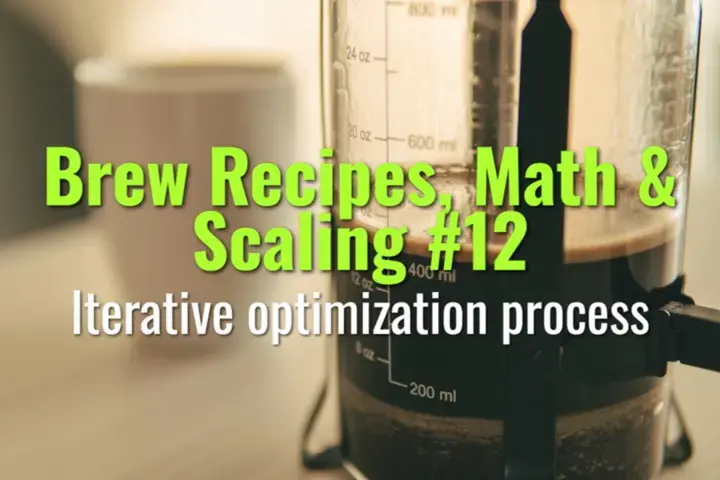Iterative optimization process
How to use an iterative optimization process to refine coffee recipes through systematic adjustments, measurements, and sensory feedback.
- Coffee Basics Nerds
- 2 min read
Article 12 of 12 in Brew Recipes, Math & Scaling/

Why Iteration Matters
- Coffee brewing involves many variables (dose, grind, water temp, time).
- Changing all at once leads to confusion and inconsistency.
- Iterative adjustments isolate variables, making improvements measurable and repeatable.
Step 1: Establish a Baseline
- Start with a standard recipe (e.g., SCA Golden Cup for filter, 1:2 ratio for espresso).
- Measure key outputs: brew time, yield, TDS, EY.
- Record initial sensory impressions.
Step 2: Identify Key Issue
- Sour → likely under-extracted.
- Bitter/ashy → likely over-extracted.
- Thin body → grind too coarse or low dose.
- Muddy/heavy → grind too fine or long contact.
Step 3: Adjust One Variable
- Only change one variable at a time:
- Grind size.
- Dose.
- Yield/ratio.
- Temperature.
- Keep other parameters stable.
Step 4: Re-Test and Record
- Brew again with new setting.
- Compare against baseline using both TDS/EY measurements and sensory notes.
- Document results carefully.
Step 5: Iterate Until Target Reached
- Continue adjusting step-by-step until brew falls into desired strength and extraction range and matches sensory goals.
- Use triangle tastings if comparing small differences.
Example (Espresso)
- Baseline: 18 g dose → 36 g yield in 28 sec, sour.
- Adjustment 1: Finer grind → 30 sec shot, balanced acidity.
- Adjustment 2: Slightly higher yield (38 g) → brighter, sweeter, improved clarity.
- Final Spec: 18 g dose, 38 g yield, 30 sec.
Summary
The iterative optimization process ensures continuous improvement by adjusting one variable at a time, recording results, and refining recipes through data and sensory feedback. This method transforms trial-and-error into a systematic pathway to consistent, high-quality coffee.
You might also like:
- Tags:
- Grind Size
- High Quality
- Matters Coffee
- Dose Yield
- Coffee Brewing
- Continuous Improvement
- Tds Ey
- Quality Coffee
- Finer Grind
- Step Step
- Slightly Higher
- Consistent High
- Water Temp
- Dose Grind
- Sensory Notes
- Golden Cup
- Sensory Feedback
- Yield Sec
- Extracted Bitter
- Strength Extraction
- Higher Yield
- Size Dose
- Example Espresso